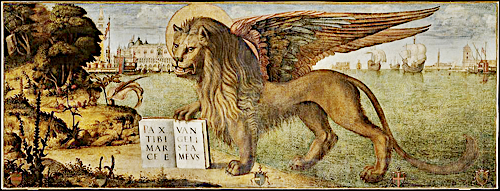Undergraduate Seminar: Renaissance Venice

In this seminar we will study Renaissance Venetian culture and society through the lens of the visual arts. Venice, situated off the northeast coast of Italy on inter-connected islands in a lagoon, was a bustling metropolis with a fluid population of around 80,000 during the Renaissance period (1300-1600). The city was a center of maritime trade and the site of encounter between local Venetians and merchants, travelers, pilgrims, slaves, sailors, soldiers, and diplomats from abroad. The Venetian state, governed by an aristocratic oligarchy, was expanding at this time, extending its domain along the eastern coast of the Adriatic, taking over territory on the Italian mainland, and facing off against the Ottomans in the eastern Mediterranean. Venetian Renaissance visual culture was characterized by hybridity and technical innovation. The form and style of works of art integrated features from other regions in Italy, northern Europe, Byzantium, Ottoman Turkey, Spain and North Africa, as well as classical Greece and Rome. Venice was famous for its glass production, luxury cloth, illustrated printed books, bronze casting, mosaic work, and oil painting on canvas. We will focus on the production of art (patrons, media, materials and techniques), celebrated practitioners (the Bellini, the Lombardi, Giorgione, Titian, Sansovino, Tintoretto, Veronese), and major monuments (St. Marks, Palazzo Ducale, Scuola Grande di San Rocco, Ca d'Oro, Il Redentore). We will also consider the image of the city of Venice, merchants and trade, foreigners and cultural exchange, the Jewish Ghetto, prostitutes and courtesans, print production, censorship and the Inquisition, nuns and nunneries, and the plague. The course topics will be explored through lecture, discussion of the readings, and student analysis of the visual art. There will be a mid-term examination and a final research paper, with a class presentation related to the research paper. No field trip.
No textbook or required materials - readings are all posted on CTools.
Estimated Cost of Materials: $50 or more but less than $100.
HISTART category for concentration distributions: D. Europe and the U.S., 3. Early Modern
Course Requirements: mid-term exam and a 12-15-page research paper due at the end of the semester (with earlier submission of a bibliography, list of critical issues, and a thesis statement)
Intended Audience: no art history background required
Class Format: 3 hour weekly meeting; sessions are discussion driven.